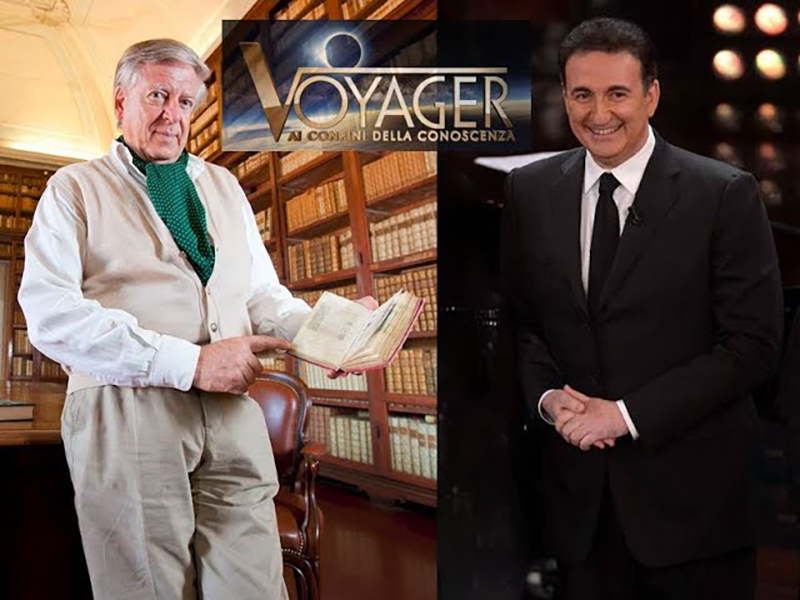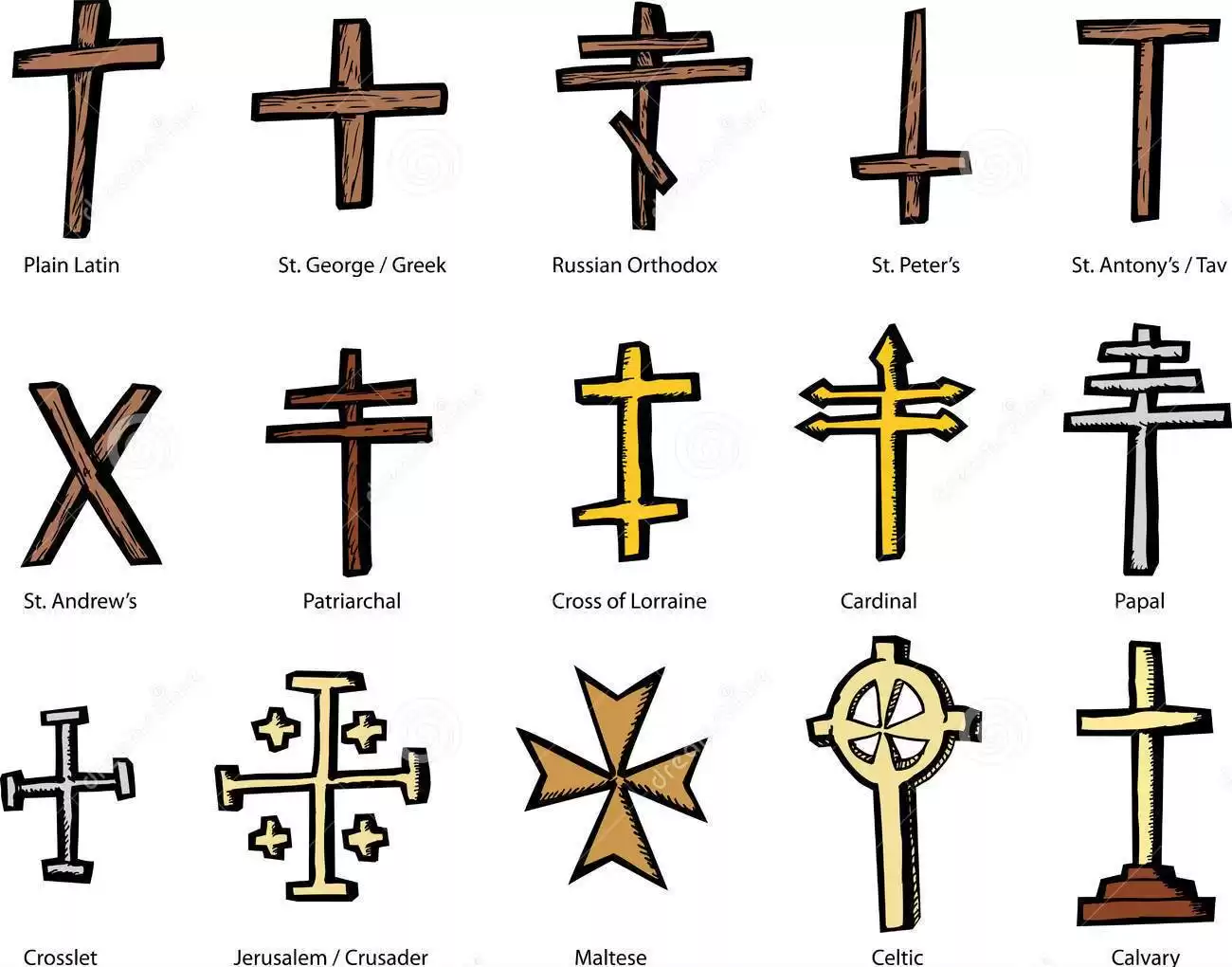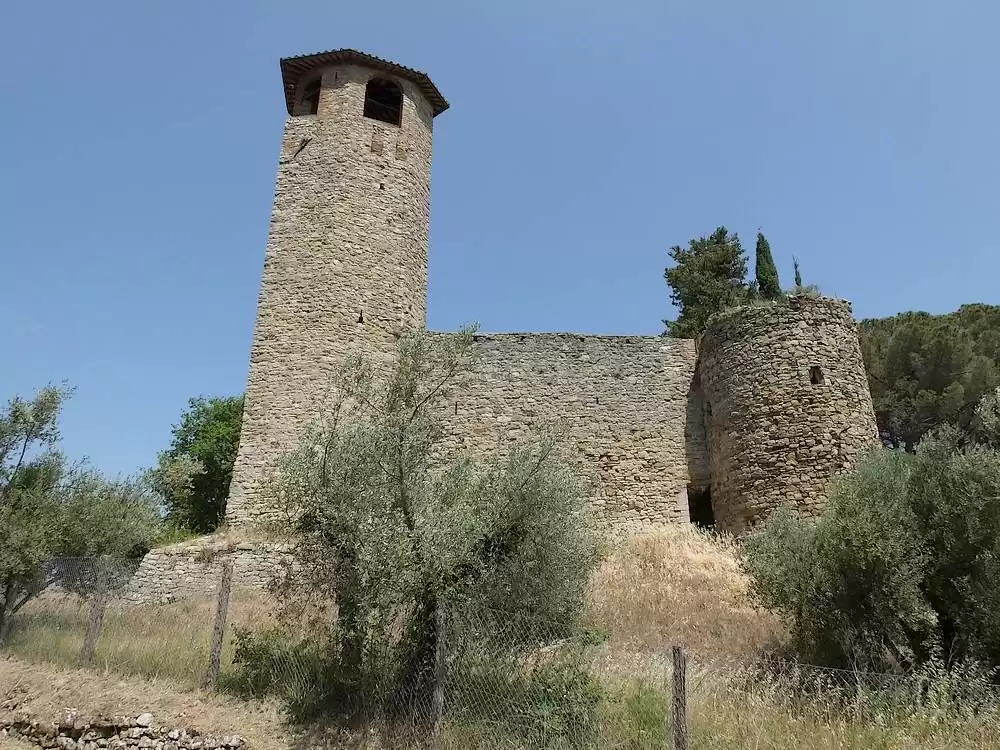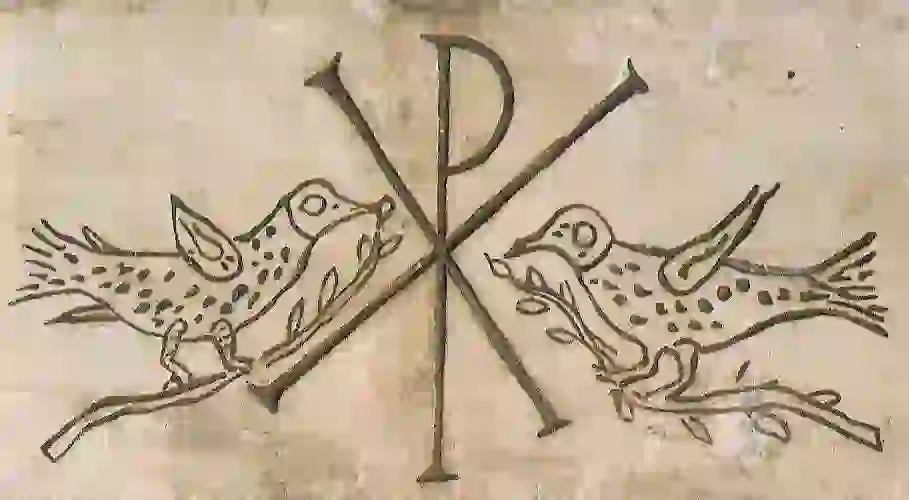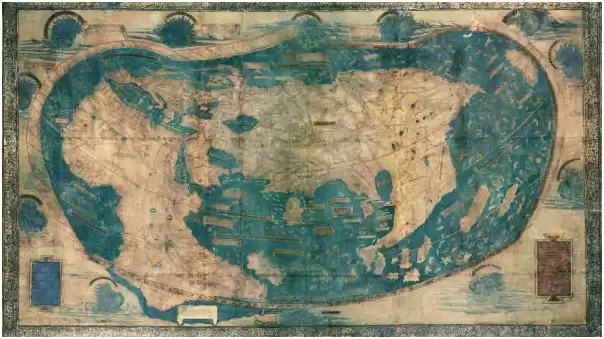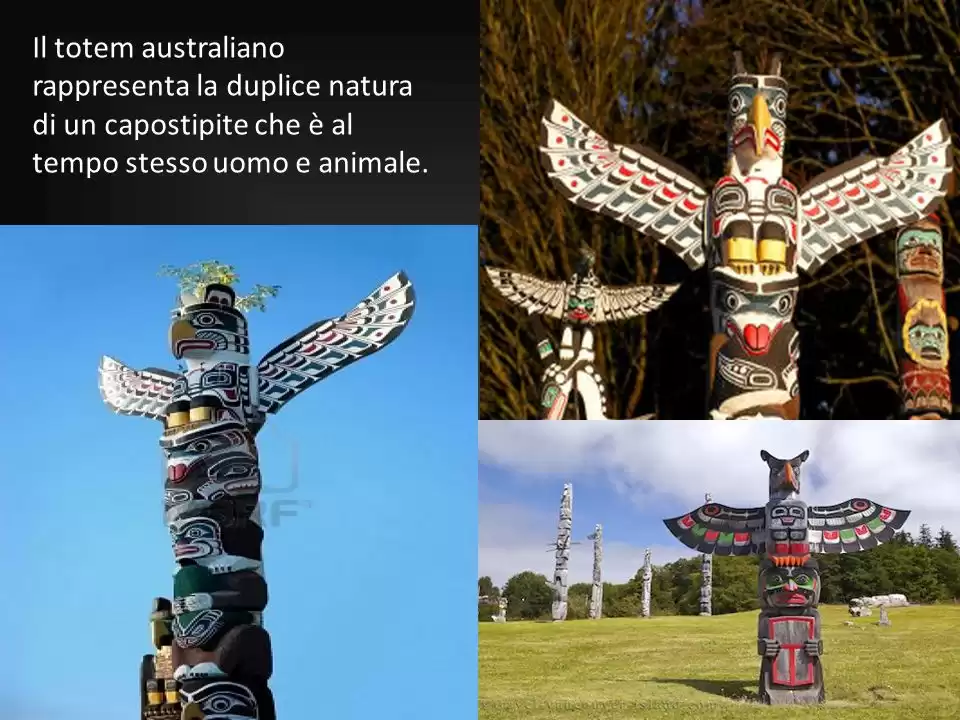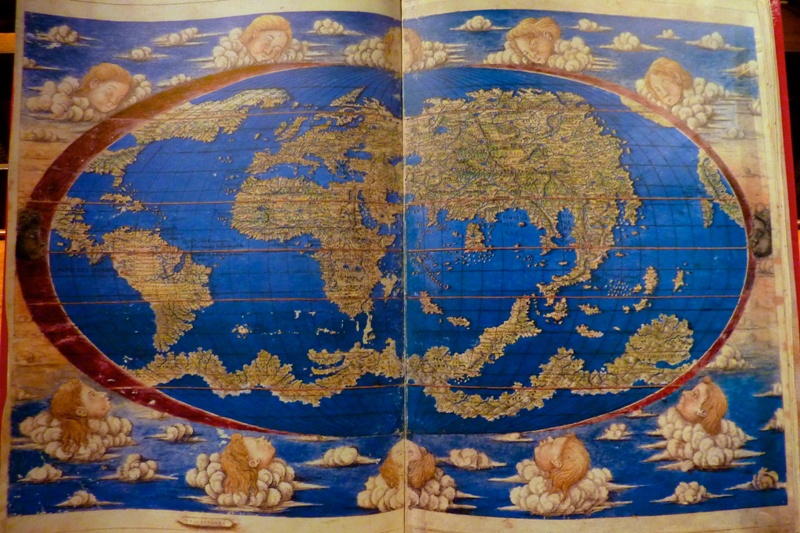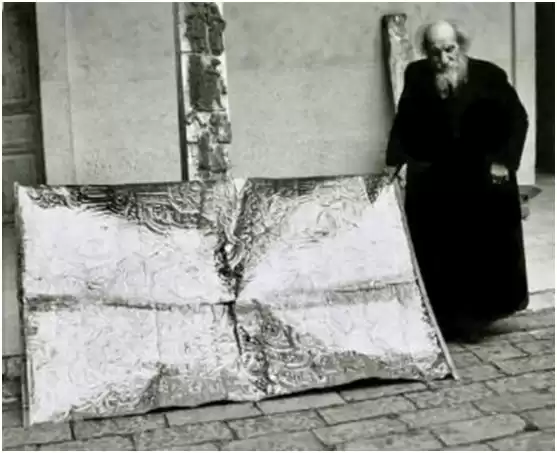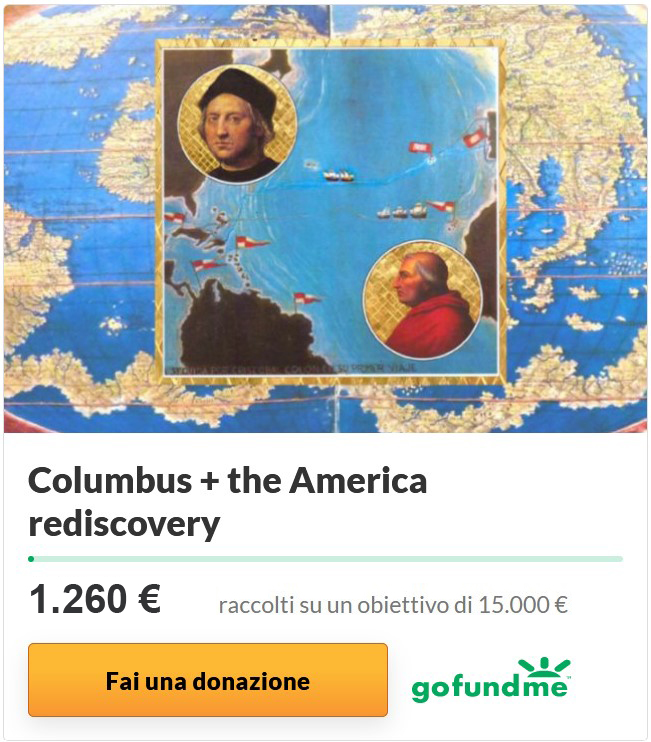Voyager 2017 Puntata 233 del 21/08/2017
Roberto Giacobbo si soffermerà su uno dei viaggiatori e scopritori più famosi al mondo, Cristoforo Colombo e sui segreti che ancora si nascondono nell'operazione che ha cambiato il mondo: la scoperta dell'America. Che si trattasse di terre già "scoperte"? Cosa lega papa Innocenzo VIII, la famiglia Geraldini e John Fitzgerald Kennedy?
Il maggior esperto italiano e forse al mondo di Cristoforo Colombo, Ruggero Marino, ci racconterà delle grandiose novità sul famoso viaggiatore e gli intrighi della Chiesa.
21/08/2017
English Version:
Good evening and welcome!
Tonight while travelling we will try to get to know important travelers. We will talk about Christopher Columbus, yes that's right what new could the possibly be. We will reveal that later.
And talking about the Americas we must say that a very significant and very famous American man, was of Italian origins and we will discover which they are so we will also get to understand better the personality of that man we are talking about.
The time for our departure has arrived. We are going to Spain.
1492 a historical year, Christopher Columbus discovers America. A discovery that changed the fate of Europe and the entire world. A story that is written in all school history books. An historical event that we all believe we know very well, but is it really a discovery or something else? Land, land, it was at 2 of October the 12th 1492 when from "Pinta" one out of the 3 caravels was herd this yelling this shout out. It was the discovery of the new world. We believe that we know everything about the life and the discoveries of Christopher Columbus, but if we find ourselves talking about him this evening, is because new evidence is being revealed. As you know we like to search the fiction in the story and the reality in the legend.
And it’s in the legend that still lives, about the discovery of America that we find new elements on another Italian protagonist. New unknown evidence brings us to say something that has been never told before.
What connects John Fitzgerald Kennedy the 35th president of the United States, with the discovery of America? A story full of scheming and conflicts of power, in which protagonists are two Popes one heresy and one enigmatic person that intervenes and resolves everything.
Kennedy, was he predestined, what part did destiny play in his presidency? “unbelievable!” We have often talked about the possibility that ancient navigators had reached the coasts of the American continent. The route to America was already known to the Greeks and the Carthaginians but it was mostly the Romans that explored the lands of the other side of the Atlantic. Traces of the Roman’s journeys were found in many American sites. The head of a Roman statue was found in Mexico, dated back to the 2nd century A.D
Roman coins have been discovered in hundreds all around north America and along Venezuela furthermore a Roman ship wreck was discovered in the end of 800’s along the coasts of Texas.
In the past, we have examined the possibility that templars already knew the routes to the American continent. According to some the harbor of Rochelle in the Atlantic was constructed with the intention not only to facilitate transatlantic voyages but also, the potential of imports of precious minerals of the mines of the new world. That could explain the massive use of gold and silver in the constructions of the great gothic cathedrals. Other indications are presented in the chapels of Rosslyn in Scotland that naturally belongs to the Sinclair family, like we said many times, a house that had many protagonists in the stories of knight templars. Remember this name Sinclair!
In a couple of columns, you can recognize the sculpting of American cactus and corn which was still unknown in Europe, and were only known after the discovery of America.
1479 Cristopher Columbus decides to relocate in Lisbon a crucial center for the future maritime discoveries. There he starts a small business. A small shop that sells nautical maps. He also meets a girl, her name is Filipa Moniz Perestrello. A girl he falls in love with and decide to marry. Felipa was the daughter of the deceased Bartolomeo Perestrello and of Isabelle Mons. In their wedding day, Cristoforo Columbo’s’ mother in law, yes, even Columbos’ had a mother in law, brings a gift, the most important gift, the gift that would be daughters dowry. And what was that gift? It was nautical maps. To a nautical maps merchant are given nautical maps? Why? How important could those documents be? Why would those maps be important? Well Felipa’s father Bartolomeo Perestrello was related to Lord Sinclair, yes, that one of the Rosslyn chapel. What did they own in this family? What were the treasures on these documents that should be passed to the new generations? It all makes you think that Columbus started off something that someone already known if not himself. Anyway, let’s be reminded that on the sails of the caravels there was a cross. A templars cross. Once they arrived in those lands the people received them gladly, in brotherhood. Maybe they had already seen this cross, maybe Columbus already knew where he was going.
In other of our researches we have already shown traces that indicated the passing of the knight Templars in the new world, like the enigmatic tower of Newport in Rhode Island or the heart of treasure in the island of Hokkaido. But not only there would be more indications that make one suppose that Columbus knew a lot more about the new world before his fateful departure on the 3rd of August of 1492. If one of his objectives was to trade with China, why bring colorful glass and other knick-knacks more appropriate to set up lucrative exchange with the local Indians other than with famous emperor. An important clue is present in maps of Piri Reis an enigmatic map, dated in 1513, after Columbus discovery, but reveal lands discovered centuries later. Like the Antarctic of the southern far ends of Latin America. On the side notes the map’s writer, the Turkish admiral Piri Reis to be exact, explains that he used 20 older maps, of which there appears to be one of a Genoese by the name of Columbus. Embarked off the Antilles in 890 in the Islamic calendar which corresponds in 1485 of our calendar.
Columbus had already visited the American continent? On what maps could he have been based upon and how had he got a hold of them?
One guess could be that many of those maps were coming from the library of Alexandria and had been reserved in the east and were brought in Europe thanks to the crusades of the holy land. Those maps could have been in the possession of the descendants of the Knight templars, or rediscovered by the Florence lobby of the Great Lorenzo. Or even in the churches archives. Giovanni Battista Cybo, Papa innocent VIII may have played an important part in this event. Actually on his grave, located inside the basilica of saint Peter to this day, there is an enigmatic inscription that reads. “in his times, the glory of the discovery of a new world.”
This phrase seems to refer to a discovery. What is behind this?
On the 25th of July 1492 Innocent VIII dies, how comes really that on his grave this phrase about new lands was written, what had he already known?
How is it possible that there are maps that tell us about America, long before 1492 the 12th of October the date of Christopher Columbus discovery? Is it possible that who had postponed the announcement of that discovery, would have political implications? Was there something else behind? Maybe this plan was made with a few strokes of the pen and if it was, who was behind all this?
You see Roberto, the preparations of the discovery of America was being developing for about 50 years in my opinion, from the fall of Constantinople to what is officially known to be the departure, and who is the sponsor, Deus ex machina of this operation. A Roman Pope. Innocent VIII, Giovanni Battista Cibo, who strangely was completely disappeared from the Columbus story. The Vatican had absolutely something to do in this expedition that would revolutionize the existence of the entire world.
Innocent thought that he would go on with this discovery of the new world through his legate, his ambassador, Cristopher Columbus, to find the gold of the Indias. To what this gold of the Indias would serve? It would serve to plan the final crusade against the Islam.
But if it is so .. why is it that the story that we know turns out to be totally different?
It’s a fact that Pope Innocent died on the 25th of July in 1492 and with the succession of the Borgias a lot of things changed the plans completely.
Every part of a meticulously organized in details plan, most probably to the point of the entire operation, was later alternated according to the agreements between Pope Borgia, who is said to have been nominated with the plots of Ferdinando and Isabella so that only Spain would exploit the new world.
A series of incredible falsifications have been made which make it difficult to verify the authenticity of certain documents.
Rodrigo Borgia was nominated Pope on the 26th in August 1492 with the name of Alexander VI a little more than a month later than the departure of Cristopher Columbus for the Americas, was Spanish. Was he elected as Pope for this purpose? To promote Spain in this expedition?
Maybe we can find an answer in old documents.
As we know history is written by the victors.
We are talking about the discovery of America by Cristopher Columbus, and many documents dated on this period have disappeared, yes because after Columbus death, his son Diego had a severe dispute concerning money and power resulting from his father’s passing. And it’s likely that the royal house had something to do with this disappearing. But we shouldn’t lose faith, because by searching you find proof.
We can find something that was missed by those that wanted to hide the facts.
We are in Santa Fe, a few kilometers away from Granada.
An agreement was signed here in 1492, between the Royals of Spain and Columbus, to give life to the big expedition of the great Genoese navigator.
And exactly here we will find documents of very important information. Something that will help us understand what may have happened in that period and what the truth about the discovery of the new land.
It all could have started by a woman an enigmatic woman.
Of course Roberto, you should know that this mysterious duchess that you are talking about was a descendant of one of the oldest and more noble families of Spain the Medina-Sidonia one of the families that among other things had financed Columbus voyage Duchess Luisa Isabella Alvarez of Toledo, known as La Duquesa Roja, passed away in 2008 spend her entire life studying and classifying more than 6 million of documents that belonged to her family a very important and authentic archive, in which the Duchess found documents that mention corn and parrots present in Europe, long before 1492. Clues and letters led her to form the hypothesis according to which Spanish, Portuguese, English and Genoese must have known the Americas long before Columbus. According to the Duchess, the Martino V era, in the first half of 400’s various parts of the new world had already been shared among the biggest nations of that time. But it all had happened secretly, many had the maps including Columbus and his lieutenant Pinzon, he must have obtained them from the Vatican.
What was called the new kingdom of Granada, was in fact central America. The gold who they said they imported from Africa or Guinea was in fact coming from the American mines of Brazil.
So, the Duchess has found something very interesting, but those are not the only indications that make us think that Columbus had done something before the official date – October 12th, 1492-.
We have already talked about the Piri Reis map, here is a copy of it, and in this map, remember there is a date that is referring to Columbus, before 1492.
Could all that be enough? Probably not, but there is more that can make us think. In fact, precisely at this place and soon we will see the exact place where there was this signature. There was an agreement between Isabella of Castilla and Cristopher Columbus. A few lines for a very important assignment, but in those few lines, attention, there is a mistake that we are about to uncover together.
The document is here. We must thank the people who have helped us in the museum that has closed the doors for some time to allow us to tell the story of Columbus in its details. Here is the document let’s look at it together. It is the agreement between Isabella di Castilla and Cristopher Columbus, we should specifically insist on this part up here in this phrase right here we now approach it and we will look at it together and we are reading the Italian translation of this writing. “The content of this plea declares that her majesty offers and grant Cristopher Columbus as a compensation of what he has discovered in the oceanic seas and to the voyage that now in God’s grace he has to accomplish, in her majesty’s service, are those that follow” and then goes the entire list. Attention though. “what he has discovered in the seas” but why use a verb in a past tense?
Maybe Columbus was returning to places he already knew? Then how comes he hadn’t made it public before? We will ask Ruggero Marino about all that.
You see Roberto this was not just a simple discovery. The verification of the existence of new land in those times would be, say like verify now days there’s life on Mars. That there is life in other worlds the fathers of the church, have always written that on antipodes there could not be another life. And whose would those children be? they Weren’t Adam’s children For the church, this was a really a severe crisis, having to assert the existence of a 4th world. At this point the knowledge of the new world was getting around in printings papers, kings and princes were trying to become kings of the world, if the church hadn’t done it and instead in quote play hide and seek, probably the church would even face the risk to collapse entirely.
A situation that had to be dealt with the soonest possible.
It would take a mediator, a man, an Italian, named Alessandro Geraldini, a man that was close to Innocent VIII but who was also close to the Spanish royals, in fact he was the teacher of their children between 1491 and 1492 Alessandro manages to arrange for Columbus and the Royals to talk and exactly at this place a committee was established, that would be able to evaluate what Columbus was introducing, presenting it in a way that he would come off as an explorer and not as a heretic.
Let’s try to understand this better by asking Ruggero Marino.
Alessandro was the one to unfreeze the operation America by convincing Isabella who despite Ferdinando’s hesitations decides to finance the expedition. Alessandro Geraldini says there was only little risk in Columbus voyage, so there should be a way to facilitate Columbus operation because it would bring a lot of potential to Spain and the future of the Spanish crown, eventually Isabella was convinced, and authorizes Columbus’ expedition.
So, the issue of heresies was resolved this way but without Alessandro Geraldini possibly none of that would have happened. See this house? this white building, well right here was the tent, because once upon a time there was a campsite here. The campsite that was prepared to against Granata, the military was stationed here, and inside the main tent, this agreement was signed. On this exact spot Columbus was given the news. He was so devoted and committed to Alessandro Geraldini that he nominated him the first bishop of Santo Domingo of the new world. The Geraldini family was naturally pushed for in the new continent and departing from Italy passing through Ireland arrived in the new world. There is one family, one important family known to the entire world, that has a part of the Geraldini blood.
To discover this, we have to go back to Italy. To Amelia.
The Geraldini family traversed Europe far and wide and then they came here in Amelia in Umbria and Alessandro Geraldini the first bishop of America, think about it, in the new land, the new world is buried in Santo Domingo. So right now, we can’t visit his place of resting but we can see the tombs of other members of his family that are right here in the church of Saint Francis in Amelia. And why do we have to go see them? Because there is something particular that we go discover together. And here we are, we have entered we are about to enter the side chapel looking at the alter on the right, where we can see on this sign “here lie members of the Geraldini family” going in this chapel dedicated to saint Antonio we can see those tombs. See their name is written here on the top. The tomb is of 1477. This is the Tomb of Camillo Geraldini of 1480 and this one of Belisario Gerldini even though it reads Geraldino… it is of 1482. Even on the floor there are tiles that mention them. On this spot it read “Natorum Geraldinorum” what is most impressing, are not the tombs and the beauty of them. But according to the dates that I just showed you, remember that America was officially discovered later by Cristopher Columbus, in 1492, all these dates we saw are preceding, those are the dates of passing of those people, comes off strange how is it possible that just on the bottom of those tombs there are these engravings that according to some remind the faces and the head coverings traditional of America. Like this one specifically.
Is it possible that the Geraldini family already knew America, before Cristopher Columbus’s’ voyage? Ruggero Marino has some thoughts regarding this assumption.
Dear Roberto in the engraving of those sarcophagus there are representations of Indians no doubt they wear headcovers with feathers. It is said that the Geraldini was a military family, a family of poor soldiers of Crist and possibly they had already been in America.
But what connected the Geraldini and America could also be something else.
We must start off of a very exciting line of reasoning. And we will do this together, revisiting the traces of history. It was the 20th of January in 1961 that was elected the young president of the United states, John Kennedy, when John Kennedy was elected, count Antonello Geraldini at the time, said “one more Geraldini makes history” why would he say that? There is something that must be told about. John Kennedy’s name was not just John Kennedy. It was John Fitzgerald Kennedy. Fitzgerald was the name of his maternal side of the family. Fitzgerald Geraldini is it just a phonetic harmony? But of which you can start of to unravel a fascinating history line. We know that the Geraldini come from Florence. Some of them came here in Amelia, those tombs are the testimony of their lives in this wonderful place. Some of them went to Northern Europe. We have the luck, here in Amelia, to meet with one descendant of the family, Alessandro Geraldini. We will meet him and ask him about how the family moved around the world.
Alessandro Geraldini or should I call him Count?
You can just call me Alessandro. The family’s origins are in Arezzo to later move to Siena and finally to Florence. In 1170 the Geraldini were deported from Florence. Geraldo had 6 children. 3 of his mostly known sons will bring us to England, are Maurizio, Gherardo and Tommaso, that served Ludwig Young who was the king of France at the time, some other children came here in Amelia.
So far nothing strange. A powerful family well connected to the Vatican and to the entire Europe. But what connects the Geraldini family to the Kennedys? Why would there be a relation between those two families?
The brothers Maurizio, Gherardo and Tommaso, in the meantime are, with Ludwig the Young, king of France, who had a great relationship with Henry II of England. The English king had already tried to conquer Ireland in the past years, turns to the king of France to ask for warriors. An army of efficient invincible soldiers, to help him win back Ireland.
12 years later in 1182 they leave to conquer Ireland, that was a perfect success. The 3 Geraldini brothers were lavished with all kinds of honors by Henry the II, and Ireland was practically divided in 3 parts. Each one under the command of each brother. The oldest brother Maurizio was the one that became viceroy of the entire Ireland, they changed their family name to feel more English, to Fitzgerald, meaning sons of Geraldo, the father that they had left back in Italy. This is how the famous debate starts, in 1962 of John Fitzgerald Kennedy president of the United States, whose mother’s name was Rose Fitzgerald. John Fitzgerald said that day, the Columbus day, that his mother was of Italian origins to begin with, and that raised major impact, because no one had ever imagined such a thing.
Ladies and gentleman, I want to express my great appreciation to all of you for your generous invitation to come here today. My grandfather, John F. Fitzgerald, who used to be the mayor of Boston, and was a Congressman, always used to claim that the Fitzgeralds were actually Italian, they were descended from the Geraldini, who came from Venice. I have never had the courage to make that claim, but I'll make it on Columbus Day here in this State of New Jersey today.
Fitzgerald, sons of Geraldini, this passage is really fascinating. A passage that helps us realize how the Italian history, the history of our country, is rich and spread out in honors in the entire world.

Versione Italiana:
Buonasera e ben trovati. Questa sera viaggiando cercheremo di conoscere anche viaggiatori importanti e parleremo di Cristoforo Colombo. Si, cosa ci sarà di nuovo lo sveleremo tra poco. E parlando di America vi dobbiamo dire che un importantissimo e famosissimo personaggio americano avrebbe delle origini italiane e scopriremo quali capiremo anche di quale personaggio stiamo parlando. È arrivato anche per noi il momento di partire, andiamo in Spagna.
1492 una data storica, Cristoforo Colombo scopre l'America, una scoperta che ha cambiato le sorti dell'europa e del mondo. Una storia riportata in tutti i libri di scuola, una vicenda che tutti noi crediamo di conoscere molto bene. Ma si tratta effettivamente di una scoperta o di qualcosa di diverso.
Terra, terra là in fondo...
Terra, terra erano le 2 del 12 ottobre del 1492 quando dalla Pinta una delle tre caravelle si sentì questo urlo, questo grido. Era la scoperta del nuovo mondo. Pensiamo di conoscere tutto riguardo alla vita e alle scoperte di Cristoforo Colombo ma, se torniamo a parlarne questa sera è perché stanno emergendo dei nuovi fatti.
Come sapete ci piace cercare il fantastico nella storia e il vero nella leggenda.
E proprio attraverso quello che di leggendario è ancora rimasto nella vicenda della scoperta dell'America, troveremo degli elementi innovativi dove un altro italiano è protagonista e un documento ancora poco conosciuto ci potrà raccontare qualcosa di assolutamente inedito.
Cosa lega John Fitzgerald Kennedy, il 35° presidente degli Stati Uniti, alla scoperta dell'America. Una storia ricca di intrighi e scontri di potere, che ha per protagonisti due papi, un'eresia, e un personaggio misterioso che manovrerà e risolverà tutto. Kennedy è stato un predestinato? Quale ruolo ha giocato il destino nella sua presidenza.
Più volte abbiamo parlato della possibilità che antichi navigatori potessero aver raggiunto le coste del continente americano.
La via per le americhe era già nota a greci e a cartaginesi, ma furono soprattutto i romani a esplorare le terre al di là dell'atlantico. Tracce del passaggio dei romani sono state trovate in diversi siti americani. In Messico è stata ritrovata la testa di una statua romana risalente al II secolo dopo Cristo. Monete romane sono state rinvenute a centinaia in tutto il nord America e al largo del Venezuela. Infine il relitto di una nave romana fu scoperto alla fine dell'800, lungo le coste del Texas.
In passato abbiamo esaminato la possibilità che i templari conoscessero già le rotte per il continente americano.
Secondo alcuni il porto sull'atlantico della Rochelle sarebbe stato costruito proprio col fine di facilitare i viaggi oltreoceano e non solo, l'eventuale importazione di minerali preziosi dalle miniere del nuovo mondo potrebbe spiegare anche l'improvviso e massiccio impiego di oro e argento per la costruzione delle grandi cattedrali gotiche. Altri indizi sono presenti nella cappella di Rosslyn in Scozia appartenente naturalmente alla famiglia Sinclair come abbiamo più volte detto, stirpe che aveva avuto numerosi protagonisti nella storia dei cavalieri templari. Ricordiamo questo nome, Sinclair.
Su un paio di colonne si riconoscono alcune sculture di cactus americani e di mais, ancora sconosciuto in Europa e rivelati solo dopo la scoperta dell'America.
1479 Cristoforo Colombo decide di trasferirsi a Lisbona, centro nevralgico per le future scoperte via mare, e li apre una piccola attività, il piccolo negozio insieme al fratello che vendeva carte nautiche e conosce anche una ragazza si chiama Filipa Moniz Perestrello.
Una ragazza di cui s'innamora, decidono di sposarsi.
Felipa era figlia di Bartolomeo Perestrello deceduto e di Isabel Moniz.
Il giorno delle nozze la futura suocera, sì perché anche Cristoforo Colombo ha avuto una suocera, porta un regalo, il regalo più importante, il regalo che sarebbe stata la dote della figlia. Bene cos'era questo regalo, erano delle carte nautiche. Da un venditore di carte nautiche gli viene regalata una carta nautica? Perché? Quanto dovevano essere importanti quei documenti? Come mai erano importanti queste carte? Beh perché il papà di Felipa, Bartolomeo Perestrello, era imparentato con Lord Sinclair. Sì, quello della cappella di Rosslyn. Cosa avevano in famiglia? Quali erano i tesori su carta che potevano trasferire alle nuove generazioni?
Tutto fa pensare che Colombo sia partito verso qualcosa che già qualcuno conosceva se non lui stesso e in ogni caso ricordiamo sulle vere delle caravelle c'era una croce una croce templare. Una volta arrivati in quelle terre e le popolazioni e le hanno accolte con grande apertura con fratellanza forse avevano già visto quelle croci forse Colombo già sapevano dove stava andando?
In altre nostre indagini avevamo anche mostrato importante in tracce che riconducevano al passaggio dei cavalieri del tempio nel nuovo mondo come la misteriosa torre di Newport in Rhode Island o il polso del tesoro sull'isola di Hokkaido.
Ma non solo ci sarebbero anche altri indizi che ci fanno supporre che Colombo sapeva molto di più sul nuovo mondo prima della sua fatidica partenza del 3 agosto 1492. Se uno degli obiettivi era commerciale con la Cina perché portare vetri colorati e gingilli sicuramente più adatti ad imbastire proficui scambi con gli indios locali piuttosto che con un illustre imperatore. Un'importante indizio è presente all'interno della mappa di Piri Reis. una carta misteriosa datata 1513 dopo la scoperta di Colombo ma che riporta terre scoperte secoli dopo come l'antartide all'estremità meridionale dell'America latina. Nelle annotazioni a margine l'autore della mappa l'ammiraglio turco Piri Rais appunto, spiega di essersi servito di 20 mappe più antiche tra queste ce n'è una appartenuta ad un genovese di nome Colombo sbarcato nelle Antille nell'anno 890 del calendario islamico corrisponderebbe al 1485 del nostro calendario.
Colombo aveva già visitato il continente americano? Su quali mappe aveva potuto basarsi e come le aveva recuperate? Un'ipotesi percorsa da molti è quella che documenti e carte provenienti dalla biblioteca di Alessandria siano state conservate in oriente e riportate in Europa grazie ai crociati di ritorno dalla terra santa.
Queste mappe potevano essere nelle mani dei discendenti delle famiglie templari. O riscoperte dall'ambiente fiorentino di Lorenzo il Magnifico o addirittura negli archivi della chiesa.
Giovan Battista Cybo ovvero Papa Innocenzo VIII, potrebbe aver giocato un ruolo determinante in questa faccenda. Proprio sulla sua tomba all'interno della Basilica di San Pietro, ancora oggi si trova un'iscrizione enigmatica che recita "nel suo tempo la gloria della scoperta di un nuovo mondo". Questa frase sembra riferirsi proprio una scoperta, cosa c'è dietro. Il 25 luglio del 1492 muore Innocenzo VIII.
Come mai? Addirittura sulla sua tomba è scritta la frase di terre nuove. Cosa già si sapeva? Come mai ci sono delle mappe che parlano già dell'America molto precedenti al 1492 al 12 ottobre data della scoperta di Cristoforo Colombo. È possibile che aver posticipato l'annunciazione di questa scoperta abbia delle implicazioni politiche? C'era qualcosa dietro? Forse questo piano era stato definito a tavolino? E se era stato definito a tavolino, chi c'era intorno a questo tavolo?
Vedi Roberto, la preparazione della scoperta dell'America si svolge attraverso un cinquantennio secondo me, dalla caduta di Costantinopoli fino a quella che passa per essere la partenza ufficiale. E chi è lo sponsor, il deus ex machina dell'operazione? È un papà di Roma Innocenzo VIII, Giovanni Battista Cybo, che curiosamente è scomparso quasi completamente dalla storia colombiana. Il Vaticano doveva assolutamente mettere diciamo la propria mano su questa spedizione che avrebbe rivoluzionato l'esistenza di tutto l'ecumeno.
Innocenzo pensava appunto di far scoprire attraverso il suo legato il suo ambasciatore Cristoforo Colombo, il nuovo mondo, per trovare l'oro delle indie. L'oro delle indie a cosa sarebbe servito? Sarebbe servito a fare la definitiva crociata contro l'Islam.
Ma allora cosa succede? Perché la storia che conosciamo risulta molto diversa? È chiaro che è morto Papa Innocenzo nel 25 luglio del 1492, con la successione del Borgia, vengono cambiate completamente le carte in tavola. Cioè ci si appropria di tutto un piano che era stato preparato minuziosamente. Probabilmente tutta l'operazione fu poi alterata dagli accordi fra papa Borgia che fu nominato con gli intrighi si dice di Ferdinando e Isabella e in modo che la Spagna si appropriò completamente del nuovo mondo e furono fatte una serie di falsi incredibili che è per cui andare a cercare l'ipotesi della veridicità di alcuni documenti è difficile.
Rodrigo Borgia, nominato papa il 26 agosto del 1492 con il nome di Alessandro VI, a poco più di un mese dalla partenza di Cristoforo Colombo per l'America, era spagnolo, fu eletto papa per questo? Per favorire la Spagna in tutta questa storia? Forse una risposta possiamo trovarla in antichi documenti.
Come si sa la storia la scrivono i vincitori.
Stiamo parlando della scoperta dell'America da parte di Cristoforo Colombo e molti documenti legati a quel periodo, sono scomparsi. Sì perché dopo la morte di Colombo, il figlio Diego ebbe una disputa molto importante legata a del denaro del potere successivo alla scomparsa del padre. E probabilmente la casa reale qualcosa ha fatto sparire. Ma non dobbiamo disperare perché cercando si possono trovare delle prove, si può trovare qualcosa che è sfuggito a chi voleva nascondere la storia. Siamo a Santa Fe, pochi chilometri da Granada e qui fu firmato nel 1492 un patto tra i regnanti di Spagna e Colombo per dar vita alla grande ricerca la grande avventura del navigatore genovese.
E proprio qui troveremo dei documenti. Troveremo delle informazioni importantissime. qualcosa che ci può far capire ci potrà far capire cosa può essere successo in quel periodo e quale può essere la verità intorno alla scoperta delle nuove terre. Tutto può cominciare da una donna. Una donna misteriosa.
Certo Roberto devi sapere che la misteriosa duchessa di cui parli era la discendente di una delle famiglie più antiche e nobili di Spagna, i Medina Sidonia, una delle famiglie che tra l'altro, avevano finanziato il viaggio di Colombo. La duchessa Luisa Isabel Álvarez de Toledo, conosciuta come La Duquesa Roja scomparsa nel 2008 passò un'intera vita a studiare e catalogare oltre 6 milioni di documenti posseduti dalla propria famiglia. Un archivio importantissimo e autentico. In cui la duchessa trovò carte che parlavano di mais e pappagalli presenti in europa ben prima del 1492. Indizi e carteggi la portarono a formulare l'ipotesi secondo cui spagnoli, portoghesi, inglesi e genovesi avrebbero conosciuto le americhe, prima di Colombo.
Secondo la duchessa all'epoca di Martino V, nella prima metà del '400, diversi territori del nuovo mondo erano già spartiti tra le grandi nazioni dell'epoca, ma il tutto veniva fatto di nascosto, tutto il mondo aveva le carte anche Colombo e il suo luogotenente Pinzon le avrebbe recuperate in Vaticano.
Quello che veniva chiamato come nuovo regno di Granada era in realtà l'America centrale. L'oro che dicevano di trasportare dall'Africa, dalla Guinea, arrivava invece dalle miniere americane del Brasile.
Insomma la duchessa ha trovato qualcosa di interessante, ma non sono solo queste le tracce che ci portano a pensare che Colombo abbia fatto qualcosa prima della data ufficiale, prima del 12 ottobre del 1492.
Abbiamo già parlato della mappa di Piri Reis che qui vive in una riproduzione e in questa mappa, vi ricordiamo c'era una data, una data legata a Colombo precedente al 1492.
Può bastare tutto questo, forse no, ma c'è dell'altro che ci può far pensare. Infatti proprio in questo luogo dove ci troviamo e tra breve vedremo il punto esatto della firma, è stato fatto un accordo tra Isabella di Castiglia e Cristoforo Colombo, poche righe per dare un incarico importante ma in queste poche righe attenzione, c'è un errore, e lo stiamo per scoprire insieme.
Il documento si trova qui, ringraziamo chi ci sta aiutando in questo museo fermo per qualche istante per permetterci di raccontare la storia di Colombo nei suoi particolari, ecco qui il documento lo guardiamo insieme è l'accordo tra Isabella di Castiglia e Cristoforo Colombo, ma dobbiamo in particolar modo soffermarci su questa parte qui in alto, su questa frase qui ecco adesso ci avviciniamo la guardiamo insieme e leggiamo la traduzione italiana di quanto scritto.
"le cose contenute nella supplica e che le vostre altezze danno e concedono in dono a Cristoforo Colombo come compenso di quello che ha scoperto nei mari oceani e del viaggio che adesso con l'aiuto di Dio deve compiere al servizio delle vostre altezze, sono quelle che seguono" e poi esce a tutto l'elenco ma attenzione vedete quello che "ha scoperto nei mari" perché usare un verbo al passato, forse Colombo stava tornando in quei luoghi che già conosceva? come mai allora non l'ha reso pubblico prima? Chiediamo tutto questo a Ruggero Marino.
Vedi Roberto, sai, non è che era una semplice scoperta. La verifica dell'esistenza di un uomo del era come dire oggi che esistono i marziani che esiste un'altra vita su altri mondi i padri della chiesa hanno sempre scritto che abbia antipodi non poteva esistere un altra vita. E di chi erano figli eventualmente questi? Non erano figli di Adamo? Per la chiesa era veramente una crisi notevolissima dover affermare che esisteva il quarto mondo. Ormai le conoscenze del nuovo mondo c'erano re-circolavano con la stampa, le carte, re e principi cercano di diventare il re del mondo se la chiesa non avesse fatto, diciamo tra virgolette, tana con un suo messaggero probabilmente la chiesa avrebbe corso anche rischio anche di crollare.
Una situazione che doveva essere risolta il prima possibile.
Ci voleva un mediatore, un uomo, un italiano, si chiamava Alessandro Geraldini, un uomo che era vicino a Innocenzo VIII, ma era anche molto vicino ai regnanti di Spagna. Infatti è stato maestro dei loro figli. Tra il 1491 e il 1492 Alessandro riesce a far parlare Colombo con i regnanti e venne istituita proprio qui una commissione in grado di valutare quello che Colombo stava proponendo facendo in modo che passasse per uno scopritore e non per un eretico.
Ma cerchiamo di capirne qualcosa di più sottoponendo a questa questione proprio a Ruggero Marino. Alessandro è colui che sblocca l'operazione America convincendo Isabella che di fronte alle titubanze di Ferdinando e ancora restii a sua volta a finanziare la spedizione. Alessandro Geraldini dice che c'era molto poco da rischiare con il viaggio di Colombo e quindi bisognava in qualche modo agevolare l'operazione perché mi sarebbe venuto una grande diciamo possibilità per la Spagna per il futuro delle corone spagnole in effetti Isabella si convince e permette la spedizione di Colombo.
Il problema dell'eresia era così risolto ma senza Alessandro Geraldini probabilmente non si sarebbe fatto nulla. Vedete questa casa questo edificio bianco? Bene proprio qui era la tenda perché una volta qui c'era un accampamento un accampamento che era stato preparato per andare contro Granada.
Qui erano collocati dei militari e all'interno della principale tenda si firmò questo accordo, proprio in questo punto Colombo ebbe questo mandato. È rimasto così devoto e così impegnato nei confronti di Alessandro Geraldini da nominarlo primo vescovo delle nuove terre di Santo Domingo. Ma la famiglia Geraldini naturalmente era protesa verso il nuovo continente e partendo dall'Italia, passò per l'Irlanda fino arrivare nel nuovo mondo. E una famiglia del nuovo mondo, una famiglia importante, conosciuta in tutto il pianeta, ha una parte della sangue dei Geraldini. Per scoprirlo dobbiamo tornare in Italia ad Amelia.
La famiglia Geraldini ha percorso l'Europa in lungo e in largo. Poi sono venuti qua ad Amelia in Umbria. E Alessandro Geraldini fu il primo vescovo americano, pensate, nella nuova terra, nel nuovo mondo, è sepolto a Santo Domingo. Quindi in questo momento non possiamo trovarci di fronte alla sua tomba ma possiamo vedere altre tombe della sua famiglia che sono proprio qui nella chiesa di San Francesco ad Amelia. E perché le andiamo a vedere? Perché c'è qualcosa di particolare che scopriremo insieme.
Eccoci qua siamo entrati stiamo per entrare in questa cappella laterale guardando l'altare, sulla destra, dove possiamo vedere da questo cartello "sono sepolti tutti personaggi della famiglia gerardini", entriamo in questa cappella dedicata a Sant'Antonio e possiamo vedere queste tombe.
Vedete il loro nome è riportato qui in alto, la tomba è del 1477, questa è una tomba invece di Camillo Geraldini del 1480, e quest'altra di Bellisario Geraldini, anche se qua c'è scritto Geraldino, ma così è del 1482, anche per terra ci sono delle targhe che li ricordano. In questo punto c'è Natorum Geraldinorum la cosa che più colpisce non sono tanto, come dire, le tombe e la bellezza di queste tombe, ma rispetto alle date che vi ho fatto vedere adesso, ricordando che l'America è stata scoperta successivamente in maniera ufficiale da Cristoforo Colombo nel 1492, e tutte le date che abbiamo visto sono precedenti e sono le date di morte di questi personaggi. Risulta curioso come proprio sotto queste tombe ci siano delle incisioni che secondo alcuni ricordano dei volti e copricapo tipici dell'America come questa in particolare.
Insomma è possibile che la famiglia Gelardini conoscesse già l'America prima del viaggio di Cristoforo Colombo? Ruggero Marino ha un pensiero a riguardo, ha dei sospetti.
Caro Roberto, nelle sculture dei sarcofaghi ci sono delle presenze che sono inequivocabilmente degli indiani hanno dei copricapi con le piume, si dice che i Geraldini erano una famiglia di milites, cioè di soldati, i poveri militi di Cristo, probabilmente anche loro, e che probabilmente potrebbero essere stati in America. Ma il legame tra i Geraldini e l'America potrebbe essere anche un altro. Infatti dobbiamo partire da un ragionamento estremamente stimolante. Lo faremo insieme ripercorrendo le tracce della storia. Era il 20 gennaio del 1961. Veniva eletto un giovane presidente gli Stati Uniti, John Kennedy. Quando fu eletto John Kennedy, l'allora conte Antonello Gerardini ebbe a dire, un altro Gerardini entra nella storia, perché avrebbe detto tutto questo? C'è qualcosa che vale la pena di conoscere meglio.
John Kennedy non si chiamava solo John Kennedy, si chiamava John Fitzgerald Kennedy. Fitzgerald era il cognome della parte femminile della sua famiglia. Fitzgerald. Geraldini. È solo un'assonanza fonetica, ma dalla quale si può partire per cercare di trovare una linea storica estremamente affascinante, allora noi sappiamo che i Geraldini sono partiti da Firenze, in parte sono venuti qua ad Amelia. Queste tombe testimoniano la loro vita passata in questo splendido luogo.
E altri andarono verso il nord Europa.
Noi abbiamo la fortuna qui ad Amelia di incontrare un discendente della famiglia Alessandro Geraldini lo incontriamo e gli chiediamo qualcosa legata al movimento della famiglia su tutto il pianeta.
Allora Alessandro Geraldini intanto la devo chiamare conte?
Mi chiami pure Alessandro. La famiglia ha origine da Arezzo. Per passare poi a Siena e alla fine arrivare a Firenze. Nel 1170 i Geraldini vengono espulsi da Firenze. Gerardo aveva sei figli. Tre fratelli più noti che saranno quelli che ci accompagneranno in Inghilterra, sono Maurizio, Gherardo e Tommaso e vanno al servizio di Ludovico il Giovane che era il re di Francia in quel momento. Altri figli vengono giù ad Amelia.
Fin qui nulla di strano. Una famiglia potente con forti legami in Vaticano e in tutta Europa. Ma cosa lega la famiglia Geraldini con i Kennedy? Perché un rapporto tra queste due famiglie?
I fratelli Maurizio, Gherardo e Tommaso nel frattempo sono da Ludovico il Giovane re di Francia che era in ottimi rapporti con Enrico II re d'Inghilterra. Il re d'Inghilterra che aveva già tentato negli anni precedenti di conquistare l'Irlanda si rivolge a re di Francia e gli chiede se c'ha dei combattenti, un'armata di gente valida, e al di sopra di ogni compromesso, che possono venire da lui per aiutarlo alla riconquista d'Irlanda.
12 anni dopo cioè nel 1182 vanno alla conquista d'Irlanda, che riesce perfettamente. i tre fratelli Geraldini vengono colmati di ogni onore dal re Enrico II d'Inghilterra. L'Irlanda e viene divisa praticamente intere regioni ognuna sotto un fratello. Il fratello Maurizio maggiore è quello che diventerà viceré di tutta l'Irlanda. Cambiano il cognome per sentendosi ormai inglesi in Fitzgerald, cioè figli di Geraldo che era il padre che avevano lasciato in Italia. Da questo viene poi il famoso discorso del 1962 di John Fitzgerald Kennedy, presidente degli Stati Uniti, la cui madre si chiamava Rose Fitzgerald. John Fitzgerald disse in quell giorno nel Columbus Day che sua madre e quindi la sua famiglia era di origine italiana come partenza e questo suscitò delle grosse perplessità in tutto il mondo perché nessuno immaginava una cosa del genere.
Signore e signori vorrei esprimere il mio più sincero ringraziamento a tutti voi per avermi gentilmente invitato alla celebrazione odierna. Mio nonno, John F. Fitzgerald, già sindaco di Boston nonché membro del congresso, ha sempre sostenuto che la famiglia Fitzgerald fosse in realtà italiana, in quanto discenderebbe dai Geraldini originari di Venezia.
Personalmente non ho mai osato fare mia tale affermazione, ma voglio farlo oggi in occasione dei festeggiamenti per il Columbus Day nello stato del New Jersey.
Fitzgerald figli di Geraldini. è veramente affascinante questo passaggio.
Un passaggio che ci fa capire ancora una volta come la storia dell'Italia, come la storia del nostro paese, sia ricca e distribuita con onore in tutto il mondo.
Il viaggio continua. Nella prossima puntata.
A Voyager.

